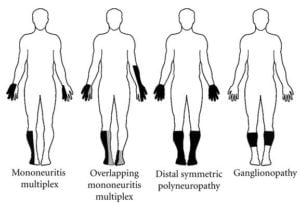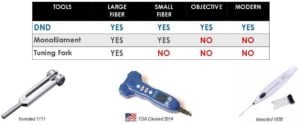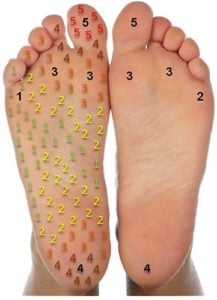Are you and your providers missing opportunities? What if they could test for all upper and lower extremities? Start a new dialogue about neuropathy, especially if your clients already have a sudomotor device or are still thinking about getting one – this information may help you close a sale!
MULTIPLE SITES
The autonomic nervous system is that part of the nervous system that controls involuntary functions like blood pressure, heartbeat, bladder, stomach, intestines, sex organs and eyes. Diabetes can affect nerves in any of these both internally and externally. For example, slow stomach emptying (gastroparesis) is an internal neuropathy. Peripheral neuropathy is an external result of damage to peripheral nerves, which often causes weakness, numbness and pain in hands, feet or other peripheral extremities.
A common cause of peripheral neuropathy is diabetes, but it may also result from medications, injuries, infections and exposure to toxins. There are few options available that help identify peripheral neuropathies. For example, labs that provide ‘punch biopsies’ for diabetic neuropathy, may take days or weeks to obtain results plus the extraction of the biopsy may be painful or slow to heal. Sudomotor testing usually obtains data from the bottom of the feet (plantar perspective) and may not measure most of the known sites which implies that providers have been missing 360⁰ measurements of the upper and lower extremities (e.g. proximal, distal, anterior and posterior). Note: Some sudomotor tests require both feet (bilateral) in order to complete a test.
ELIMINATE SUBJECTIVITY
Despite medical advances in technology, the measurement of diabetic neuropathy has remained a mystery for over 300-years. The two most commonly used tools in healthcare today that attempt to determine peripheral neuropathy are the tuning fork (300+ years old) and the monofilament (80+ years old).
The need for ‘subjective testing of neuropathy’ is long overdue. Sales representatives should feel confident in the fact that they have direct access to the latest evidence-based technology which provides a real solution to providers and their patients.
BIOMARKERS
Biomarkers can be biological characteristics that are identified and graded that indicate either normal or diseased processes in the body. Predictive biomarkers provide the current data of the measured extremities and identify low to high risk sites, which may be evaluated over time.
According to the American Diabetes Association (ADA), ‘diabetic peripheral neuropathy is the most important cause of foot ulceration… complications drive amputation risk and economic costs of diabetic neuropathy, which are also predictors of mortality’. Currently, our healthcare systems do not use objective tools to identify neuropathy. Nearly 54,000 people with diabetes have amputations each year, with the average cost of $70,000.00.
FINAL THOUGHTS
Subjectivity and the tools used in diabetic foot exams may very well be the largest causative factor in diabetic foot ulcers, diabetic foot amputations and other upper and lower-extremity related conditions in people living with diabetes. Educating medical providers and healthcare organizations to move away from subjective tools to modern, non-invasive and objective technology has a financial benefit to you and your providers for maintaining a patient’s health, while saving billions of dollars from Medicare and other payers.
As a member of the Every Ancillary platform, you may offer the only solution for upper and lower extremity measurements with the Diabetic Neuropathy Device™ (DND), which objectively measures one or multiple sites of a patient’s sympathetic skin response using temperatures and vibrations. Please visit www.Diabetic-Neuropathy-Device.com or contact Daniel Medrano for more information at info@MedranoAssociatesLLC.com thank you!




